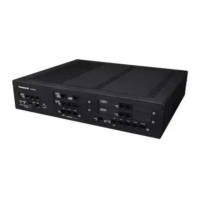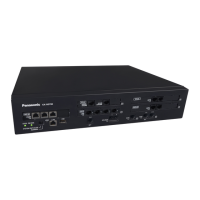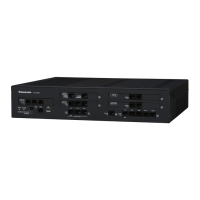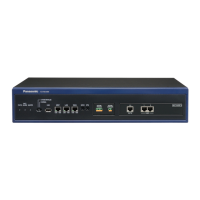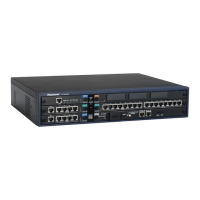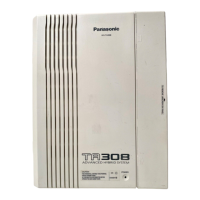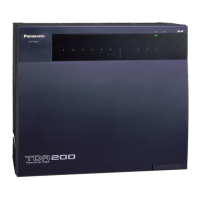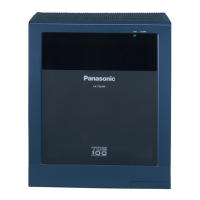– Intercept Routing—No Answer/Busy/DND
(® 2.1.1.6 Intercept Routing)
[Programming Example for Intercept Routing]
Extension No.
Intercept Destination
Day Lunch Break Night
101 102 591 591 591
102 103 591 591 591
301
(Operator)
– – – 591
In this example:
If a call is received at extension 101 and cannot be answered:
a. In day mode: the call will be redirected to extension 102.
b. In
lunch/break/night mode: the call will be redirected to this feature, and a voice message will be recorded
to the message box.
If a call is received at extension 301 (operator), the call will only be redirected to this feature in night mode.
If both FWD and Intercept Routing features are set for an extension, the FWD setting has priority. So, for
example, it is possible for extension 101 to temporarily set FWD settings from his extension to forward calls
to this feature even during day mode.
Greeting Message for Each Time Mode
When a call is redirected to this feature, the caller hears the designated greeting message. In addition to the
normal greeting message, an extension user can record a different greeting message for each time mode
(day/lunch/break/night) (® 5.1.4 Time Service).
[Recording Example]
• Normal Greeting Message: "You have reached John. I am sorry I cannot take your call right now. Please
leave a message."
• Greeting Message for lunch mode: "You have reached John. I am sorry I am out for lunch right now. Please
leave a message."
If both the greeting message for a certain time mode and the normal greeting message have been recorded,
callers will hear the greeting message for that time mode. However, if no greeting message has been recorded
for a certain time mode, the normal greeting message will be played instead.
If neither the normal greeting message nor the greeting message for a certain time mode have been recorded,
incoming calls will not be redirected to this feature in that time mode. For example, if a greeting message has
only been recorded for night mode, and no normal greeting message has been recorded, incoming calls can
only be redirected to this feature in night mode. No incoming calls will be redirected to this feature in day/lunch/
break mode.
Direct Recording
An extension user can leave a voice message directly in the message box of an extension. In this case, the
target extension will not ring. It is also possible to transfer a caller directly to the message box of an extension.
Message Notification
If a new voice message has been left in a message box, and distinctive dial tones are enabled, the user will
hear dial tone 4 when going off-hook. If a message box contains only voice messages that have previously
been listened to, dial tone 2 is heard instead. In addition, if the user’s telephone has a Message button or
Message/Ringer Lamp, the corresponding button or lamp will light when a voice message has been left.
Pressing the lit button while on-hook shows the caller’s information.
SVM Log
When a caller leaves a voice message, the following information is also recorded (as available):
222 Feature Guide
2.16.3 Built-in Simplified Voice Message (SVM)
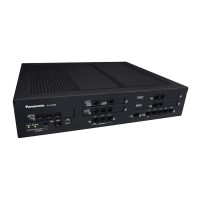
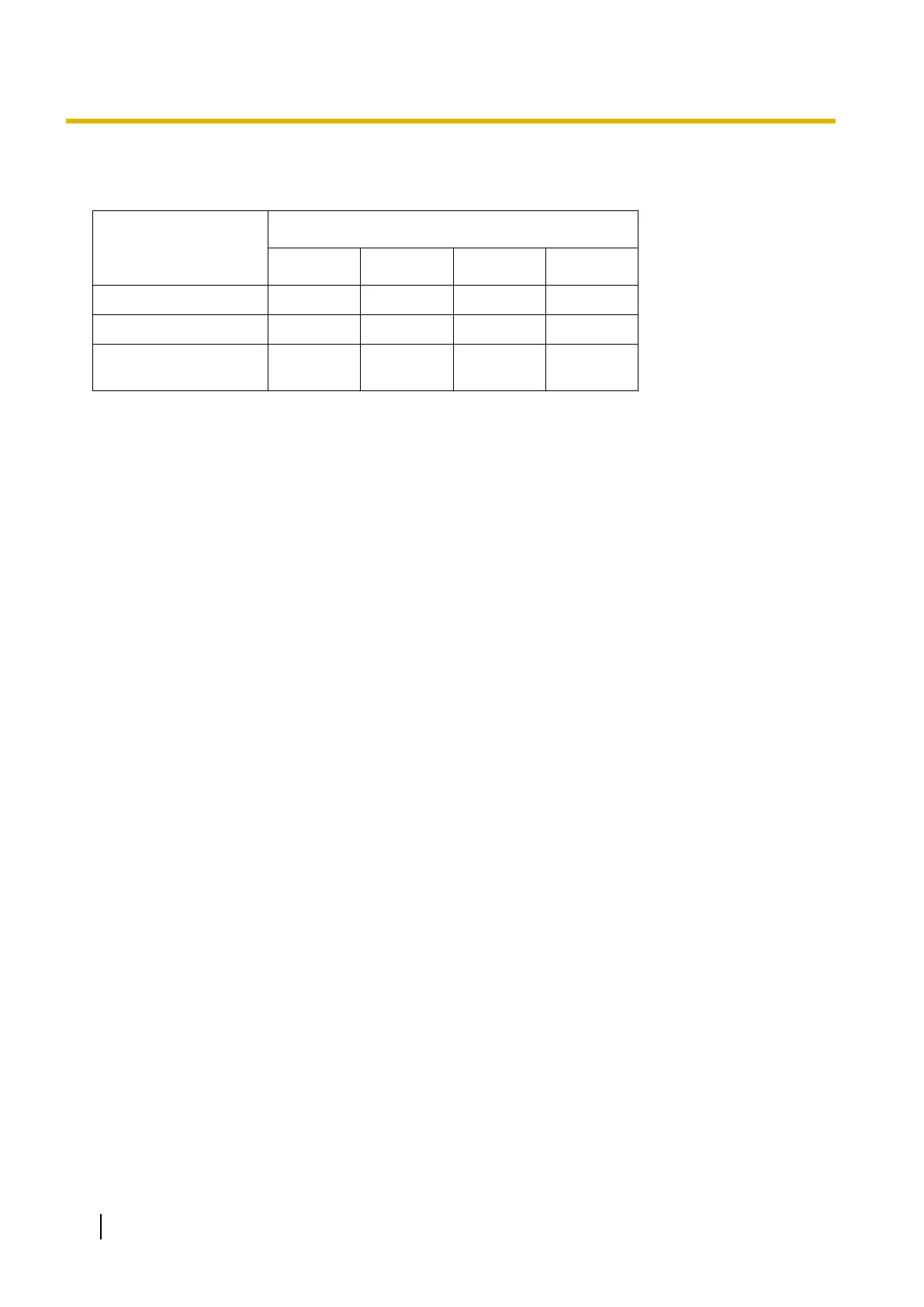